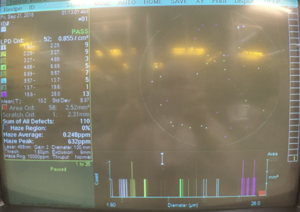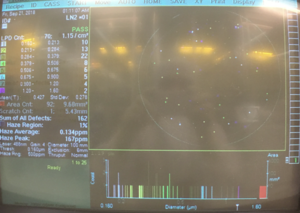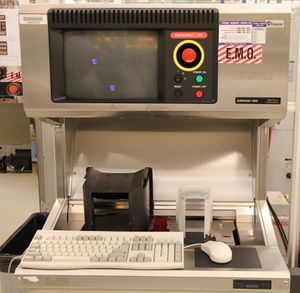Surface Analysis (KLA/Tencor Surfscan): Difference between revisions
Jump to navigation
Jump to search
Content deleted Content added
m →Documentation: minor formating |
|||
| Line 11: | Line 11: | ||
}} |
}} |
||
==About== |
==About== |
||
This system uses a laser-based scattering method to count size and distribution of particles (or other scattering defects) on a flat wafer surface. It can scan wafers in size from 4 to |
This system uses a laser-based scattering method to count size and distribution of particles (or other scattering defects) on a flat wafer surface. It can scan wafers in size from 4 to 8 inches. |
||
==Documentation== |
==Documentation== |
||
*[[KLA-Tencor Surfscan - Standard Operating Procedure|Standard Operating Procedure]] |
*[[KLA-Tencor Surfscan - Standard Operating Procedure|Standard Operating Procedure]] |
||
*[ |
*[//wiki.nanotech.ucsb.edu/w/images/9/96/Surfscan-Operation-Manual.pdf Operations Manual] |
||
**''For detailed measurement info, it is highly recommended that you read the manual.'' |
**''For detailed measurement info, it is highly recommended that you read the manual.'' |
||
*[ |
*[//wiki.nanotech.ucsb.edu/w/images/2/27/Surfscan-Surfscan_6200_info.pdf Surfscan Info] |
||
=== Screenshots === |
=== Screenshots === |
||
Revision as of 04:25, 31 March 2020
|
About
This system uses a laser-based scattering method to count size and distribution of particles (or other scattering defects) on a flat wafer surface. It can scan wafers in size from 4 to 8 inches.
Documentation
- Standard Operating Procedure
- Operations Manual
- For detailed measurement info, it is highly recommended that you read the manual.
- Surfscan Info
Screenshots


